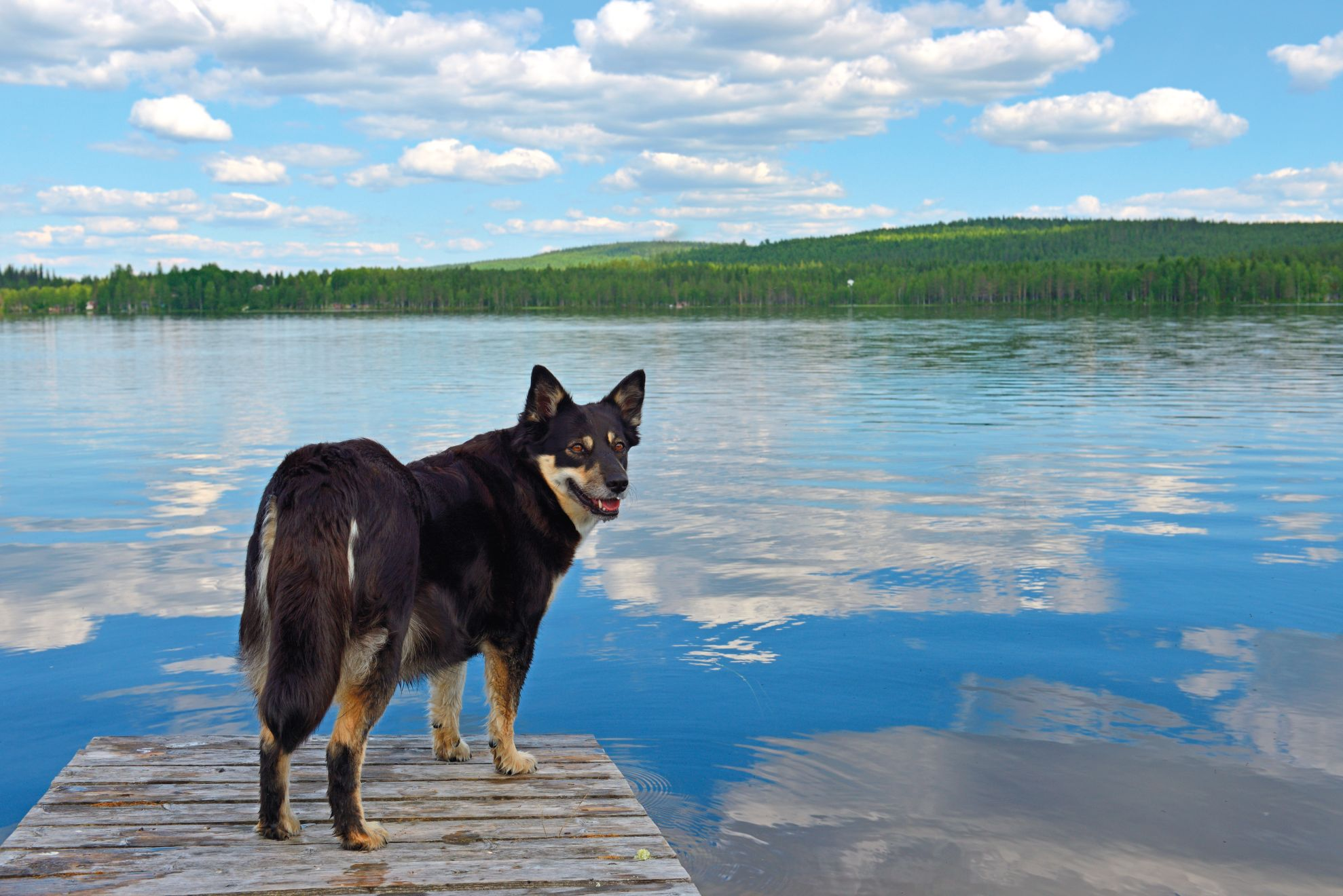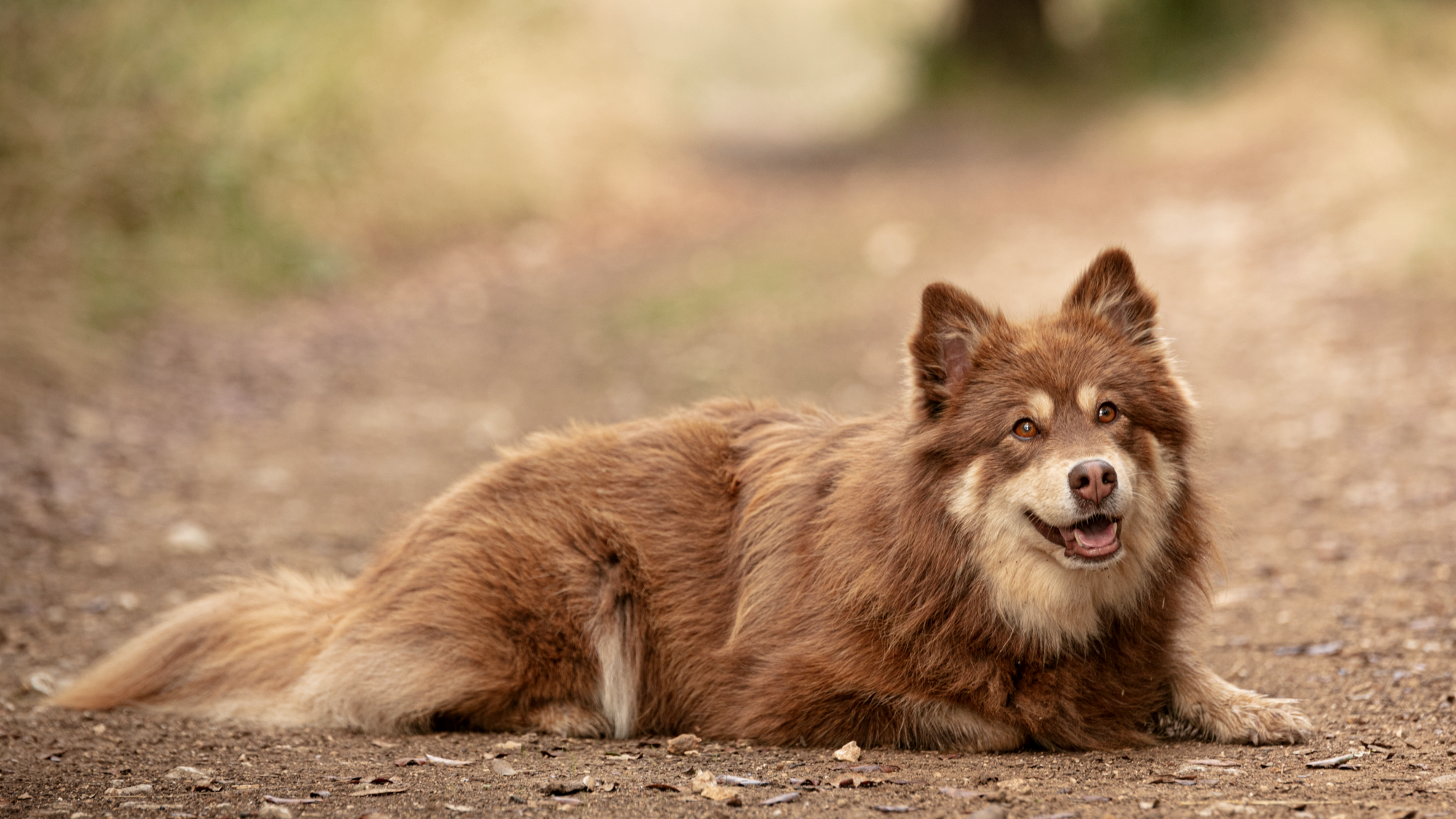
Let's talk Lapponian Herders
If the Lapponian Herder looks a bit like a wolf, that’s because they’re closely related. But there the similarity ends. These handsome hounds are gentle and affectionate shepherd dogs that have been bred to guard other animals – in particular reindeer – rather than prey on them. Highly intelligent and very loyal, they’re also deeply attached to their humans. Just bear in mind that they have an abundance of energy and, with their farming background, thrive on having a job to do. This means the Lapponian Herder is best suited to an active owner with an outdoorsy lifestyle (running shoes at the ready... ).Official name: Lapponian Herder
Other names: Lapland Reindeer Dog, Lapinporokoira
Origins: Finland

| Drooling tendencies: |
|
Warm weather? |  |
| Shedding level: | Suited to apartment living? | ||
| Physical activity needs (high, low, medium): | Moderate | Kid-friendly? |
|
| Compatibility with other pets: | Can stay alone? | 
|
We advise against leaving pets alone for long stretches.
Companionship can prevent emotional distress and destructive behaviour.
Speak to your veterinarian for recommendations.


| Baby age | Birth to 2 months |
| Puppy age | 2 to 12 months |
| Adult age | 1 to 7 years |
| Mature age | 7 to 10 years |
| Senior age | 10 years onwards |
1/7
Get to know the Lapponian Herder
All you need to know about the breed
Also known as the Lapland Reindeer Dog (and nicknamed the “Reindeer Herder”), this tells you everything you need to know about the Lapponian Herder. Hardy and resourceful, these agile animals hail from the wintery landscapes of northern Scandinavia. There, they have traditionally been used to herd and guard semi-domesticated reindeer.
Today, while still regarded mainly as working animals, the Lapponian Herder can also adapt to life as a family pet – though they do best in a home with outdoor space. The key is to ensure they get an abundance of exercise and plenty of mental stimulation. But it’s all part of the fun, of course, with the Lapponian Herder – an intelligent and affectionate breed that will reward you back ten-fold with any effort you put in.
As well as looking quite wolflike, the gorgeous good looks of the Lapponian Herder are reminiscent of the German Shepherd, though they are smaller in size. Usually chocolatey, charcoal or grey, their thick, lush coats are perfect for keeping them warm and dry in the cold winter weather. When you add in the powerful, athletic build of the Lapponian Herder, it’s perhaps no surprise that one of their favourite things is careering through the fields and woodland – their human pack panting in tow behind them.

2/7
2 facts about Lapponian Herders
1. Long and lithe
An interesting fact about the Lapponian Herder is that they tend to be considerably longer than they are tall. To give you a rough idea, a female is usually about 15 per cent longer than the height at the withers, while for a male the figure is typically 10 per cent. Nonetheless, dogs with the correct conformation will still appear to be well-proportioned.
2. All bark and no bite
While the Lapponian Herder is known for their docile personality, it’s fair to say that they do seem to enjoy the sound of their own voice when out on a walk. But that’s only because of their background as working animals. Also, they tend to be much quieter and calmer on home territory – unless, of course, a stranger approaches, in which case the Lapponian Herder will bark to sound the alarm.
History of the breed
Developed in Finland by the semi-nomadic Sámi people (also known as Lapps or Laplanders), the Lapponian Herder is a spitz-type herding dog that has been with us for several hundred years. Thought to be a cross between male dogs and female wolves, these hardy animals have always been used for the herding and guarding of reindeer.
During World War II, however, history took a different turn for the Lapponian Herder – and, like so many other breeds at the time, their numbers plummeted. To make matters worse, they were often confused with another breed, the Finnish Lapphund, and the two were regarded as one and the same for a time. Thankfully, a reprieve came in the 1950s when a group of dedicated breeders got together to try and save the Lapponian Herder, and the breed was finally accepted in its own right in 1966.
Today, a dedicated breeding programme ensures that a pure line is maintained and, suffice to say, the Lapponian Herder is thriving in their native homeland. While still relatively rare outside Scandinavia, they do have a presence in the U.S. too. They were recognised by the American Kennel Club, in their Foundation Stock Service, in 2017.

4/7
From head to tail
Physical characteristics of Lapponian Herders
1. Body
Powerful, athletic and long body with low, curved tail.
2. Coat
Medium-to-long coat comes in a wide range of colours.
3. Head
Elongated head with expressive eyes and pricked ears.

5/7
Things to look out for
From specific breed traits to a general health overview, here are some interesting facts about your Lapponian Herder

6/7
Caring for your Lapponian Herder
Grooming, training and exercise tips
Despite their thick, double coats, the Lapponian Herder only needs minimal grooming to keep them looking their glossy best. As their fur is short enough not to get matted, a weekly brush, and the occasional bath, should more than suffice – though the Lapponian Herder will require extra attention during their twice-yearly shedding times. Teeth should be brushed daily if possible as often as possible, claws clipped as needed and ears checked regularly. The Lapponian Herder requires plenty of exercise – with at least one to three hours a day. This should ideally include a daily run along with vigorous games in the garden and some play indoors. With their shepherding heritage, they can excel at canine sports, too, such as obedience, agility and rally. Very intelligent and eager to please, the Lapponian Herder generally does well in training (although they definitely know their own mind!) and will thrive on the mental stimulation. In short, this is a dog that likes having a job to do. Early socialisation is strongly recommended due to their innate herding mentality and because they can be a little aloof around strangers.7/7
All about Lapponian Herders
That is a yes. The Lapponian Herder is, indeed, regarded as a rare breed. While they are popular in their native Finland, and also known across wider Scandinavia, they are still hard to come by in other parts of Europe. However, there is a small contingent of Lapponian Herders in the U.S. too. Their rare status just makes them all that more special.
If you’re wondering if Lapponian Herders can be prone to shedding, the answer is unfortunately yes. They have a thick double coat and generally shed twice a year: in the spring and in the autumn. The good news, though, is that it’s usually quite manageable as the shedding is fairly moderate and their fur isn’t terribly long. Also, regular brushing of your Lapponian Herder will help you stay on top of things (and save your carpet…).
translations.feature.breeds.otherbreeds
Read more on this topic

How your dog's nutrition needs change with age

How to adopt a dog

Things to consider before getting a dog
Sources
1 - Veterinary Centers of America https://vcahospitals.com/
2 - Royal Canin Dog Encyclopaedia. Ed 2010 and 2020
3 - Banfield Pet Hospital https://www.banfield.com/
4 - Royal Canin BHN Product Book
5 - American Kennel Club https://www.akc.org/


